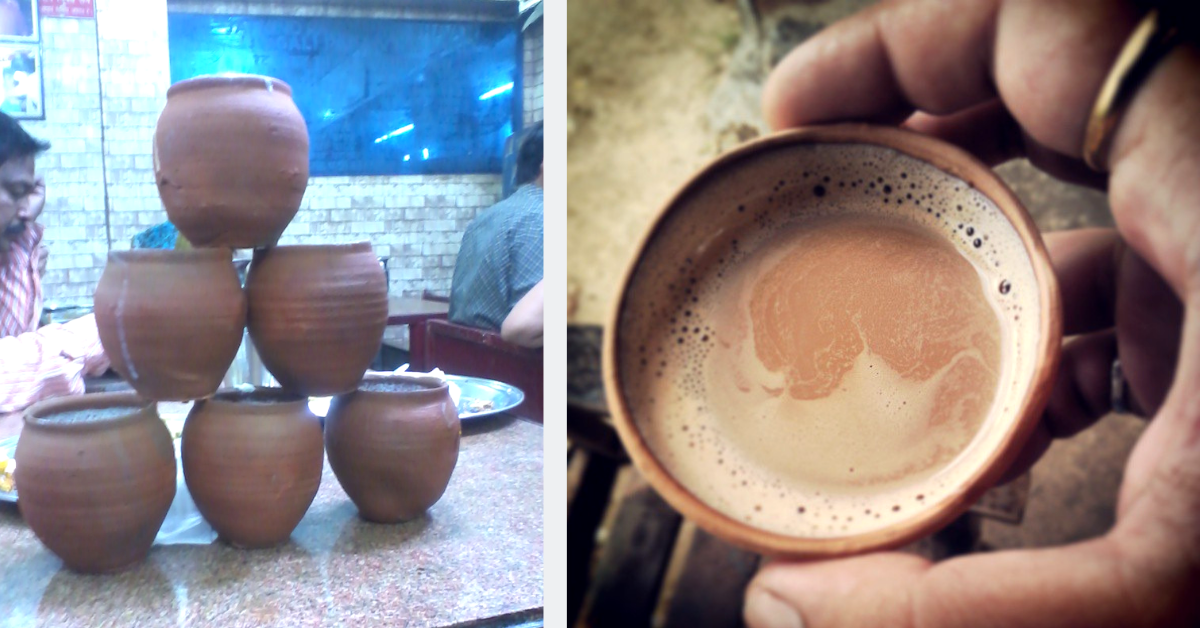There’s something about cold winter mornings and a steaming cup of chai. What makes it even better is to have that chai in a kulhad (earthen cup).
Fifteen years ago, erstwhile Railway Minister Lalu Prasad Yadav had introduced kulhads at railway stations across the country. However, over the years, these earthen cups started vanishing, making way for plastic and paper cups.
With a greater thrust on reducing the usage of plastic, the humble kulhad is all set to make a comeback.
If you have ever had tea in one of these, then you are sure to vouch for the taste and aroma that it adds.

Photo Source
According to Railway Minister Piyush Goyal, in a circular issued by the board to the chief commercial managers of Northern Railway and the North Eastern Railway, “Zonal railways and the IRCTC are advised to take necessary action to ensure use of locally produced, environmentally-savvy terracotta products like ‘kulhads’, glasses and plates for serving items to passengers through all static units at Varanasi and Rae Bareli railway stations with immediate effect so that local terracotta product manufacturers could easily market their products.”
In an India Today report, the Minister hailed the decision and said, “Support to the domestic industry, help to the rail passengers: To provide tea, lassi, and other food items to the passengers, kulhads, glasses, and bowls made of clay will be used. This will help in environmental protection as well as will profit the domestic industry.”
Advantages of using a kulhad
1. It is known to give an earthy essence, flavour and fragrance to the tea.
2. It is biodegradable, hence can be thrown or broken, and won’t be hazardous like plastic. When you dispose of them, they get mixed with the soil soon.
3. Using a kulhad is extremely cost-effective since it is cheaper than glass or plastic.
Photo Source
4. Kulhads cannot be reused, so you won’t have to worry about the lingering of germs or bacteria.
5. They are also inherently hygienic, considering they are made by firing kiln.
6. Tea served in styrofoam cups can be harmful to your health. Polystyrene, which is known to be a carcinogen, is the material used to manufacture those cups. It leeches into the liquid poured into them, thereby posing concerns to your health.
7. Clay kulhads are alkaline, which means that using them can help in bringing down the acidic nature of your body.
Noted environmentalist Vandana Shiva, speaking on the benefits of using the kulhad, once said, “The kulhar is the symbol of an earth-based, crafts-based culture—the ultimate sustainable economy. The clay is obtained by desilting tanks, irrigation channels and streambeds. The potter desilts water storage and distribution systems and the fuel used in the potter’s kilns are the biomass waste that farmers provide.”
Here’s hoping that this move by the Indian Railways is implemented in its entirety and achieves its objectives.
(Edited by Shruti Singhal)
You May Also Like: The Amazing Story of a Railway Junction in Bihar That Doubles Up As a Coaching Centre!
Like this story? Or have something to share?
Write to us: contact@thebetterindia.com
Connect with us on Facebook and Twitter.
If you found our stories insightful, informative, or even just enjoyable, we invite you to consider making a voluntary payment to support the work we do at The Better India. Your contribution helps us continue producing quality content that educates, inspires, and drives positive change.
Choose one of the payment options below for your contribution-
By paying for the stories you value, you directly contribute to sustaining our efforts focused on making a difference in the world. Together, let's ensure that impactful stories continue to be told and shared, enriching lives and communities alike.
Thank you for your support. Here are some frequently asked questions you might find helpful to know why you are contributing?

